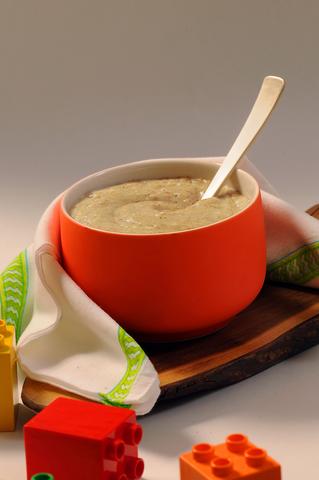by Neelanjana Singh, President Indian dietetics association, Delhi chapter
The topic in focus this year at Poshan Maah 2019 (National Nutrition Month celebrated in September) was the first 1000 days of nutrition, nutrients-rich food, anemia prevention, diarrhea management, and hygiene and sanitation, all of which are interconnected and relevant for every mother and baby.
When your child is nearing the age of six months, it is understandable that you might be flooded with doubts and apprehensions about when to introduce solids and liquids other than breast milk (infant formula, in some cases) into the baby’s diet. These starter solids and liquids are referred to as complementary foods. The term ‘complementary’ evidently signifies that these foods are meant to complement breast milk intake. The purpose of adding these foods to the diet is to provide the extra nutrients required by the growing baby. Another word that one often encounters in this context is ‘weaning’, which is the process of expanding the infant’s diet to include items other than milk- breast/formula.
Worried about poor breastmilk supply? 6 Food Items To Increase Breast Milk Production
|
The weaning stage brings with it the anxiety of introducing complementary foods either too soon or too late. An indicator that helps determine the right time for every individual baby is that the infant should have attained the developmental skills relevant for the intake of such foods. This means that–from the neurodevelopment perspective–the baby is ready for a more diversified diet. In order to make things simple, prescribed guidelines suggest that for babies born on the term, the period when complementary feeding can begin is typically around 6 months of age.
Initiating complementary foods before the age of 4 months can pose a problem as the infant’s gut is not prepared to handle the foreign matter that is food.
Check out 6 months baby food chart for your infant
|
Here are some defining characteristics of the food that should be used for weaning:
1. The food should be calorie-dense, rich with protein, vitamins, and minerals
2. The texture should be such that it can be swallowed easily
3. The prepared food should have low bulk as the baby’s stomach capacity is rather small
4. The food should be low in fiber
5. It should not contain any added artificial flavors and colors
The 3 keywords to remember in the case of complementary foods are adequacy, hygiene, and appropriate in terms of texture and nutrients.
Adequacy refers to the amount that one should feed the baby. Quite often, I find that mothers serve a few spoons of dal pani (lentils water) to the baby and feel that the job of complementary feeding is complete. A few spoons of food in the first few days is fine as it prepares the baby to eat from a spoon. However, over the next few days, this portion has to reach the serving size of ½ cup of a cereal-pulse mixture in the cooked and mashed form. Although rice and dal are the most popular starter foods, there is a need for diversity in the baby’s diet. Please always consult your doctor if you are unsure of adequate serving sizes.
From the ages of 6 months to 9 months, the following foods can be added on, one at a time, so that the baby gets gradually accustomed to varied tastes.
Fruit:
Banana or pureed apple, or any other fruit without the peel and seeds is a good pick. Fruits such as strawberries and raspberries with small seeds should be avoided at this stage.
Vegetables:
Pureed vegetables can be introduced by adding them to the cereal-pulse blend. Avoid fibrous and leafy vegetables, such as spinach, broccoli, and beets. These foods are rich in nitrates, which is not a requirement at this stage.
Cereals and tubers:
Rice and its variants like ragi, puffed rice powders, rice flakes, amaranth, semolina, and broken wheat dalia, mashed boiled potatoes are easily available options.
3 Awesome Ragi Recipes Moms Can Make Under 15 Minutes (across age groups) |
Pulses:
All varieties of pulses can be introduced, except those of the whole and split variety.
Milk:
Yogurt, cottage cheese (More on the variety of complementary foods will follow in the next article).
Besides the nutrition profile, please also pay close attention to the preparation of the food. Any food, no matter how nutritious it inherently is, needs to be prepared by following basic principles of hygiene. If appropriate hygiene practices are neglected, all the potential nutritional benefits of the food will get nullified.
The texture of the food is another important criterion to consider. The initial weaning foods should be in the puree or mashed form, after which one can gradually progress to finely chopped foods, and then to the usual table foods by the age of 12 months.
You might also be particularly concerned about introducing potentially allergenic foods in the baby’s diet where there is a family history of allergies. However, there is comforting news in this regard. EFSA and ESPAGHAN, the top bodies that formulate the dietary guidelines, have stated that there is no reason to postpone the introduction of such foods (i.e. eggs, cereals, etc.) to a later age. Gluten can also be introduced along with the other complementary foods. Therefore, one need not postpone the introduction of varied foods into the baby’s diet.
The views and opinions expressed are those of the author.
 Neelanjana Singh has had over 25 years of clinical experience as a dietician and diabetes educator at AIIMS, the Sitaram Bhartia Institute of Science and Research and the Diabetes Foundation. Neelanjana has also been associated with the WHO as a member of its committees and projects on nutrition and health. Her book “Our Kid Eats Everything” is a fountain of practical advice!
Neelanjana Singh has had over 25 years of clinical experience as a dietician and diabetes educator at AIIMS, the Sitaram Bhartia Institute of Science and Research and the Diabetes Foundation. Neelanjana has also been associated with the WHO as a member of its committees and projects on nutrition and health. Her book “Our Kid Eats Everything” is a fountain of practical advice!
|
|




